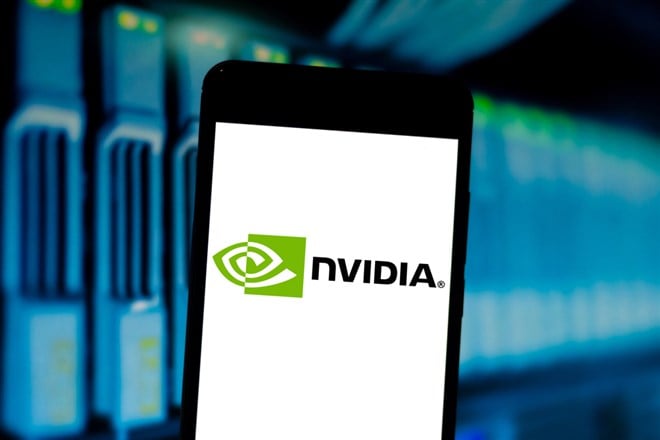
At least a few dozen analysts have given Nvidia stock an average 12-month price target for the quarter is $253.87, with a low of $150.00 and a high of $400. This represents a +46.58 percent increase from the last price of $173.19.
An overwhelming percentage of these analysts are currently advising that Nvidia (NASDAQ: NVDA) deserves a MODERATE BUY rating. In fact, there is a BUY: HOLD ratings ratio of at least 3:1. In addition, analysts are not really advising a STRONG BUY rating as not a single analyst has given a sell rating. This rating remains consistent over the last three months.
Part of the reason for this, of course, is that while Nvidia shares have been growing incrementally, NVDA price targets have been in steady decline since late last year. Indeed, while NVDA stock has exceeded analyst estimates, every quarter for the last year, its reported earnings hit a peak in December and have been sinking ever since.
Nvidia Earnings Per Share Outperforms While Value Slips
Specifically, analysts forecast an Earnings Per Share (EPS) estimate of $1.02 in Q2 of 2021, with a range of $0.96 to $1.07. The actual earnings came in at $1.04, beating the estimate by +128.18 percent. The upward trend continues in Q3 of 2021, when the actual EPS of $1.11 beat the midline estimate by +113.36 percent; and again in Q4 when the actual EPS of $1.23 beat the estimate by nearly +125 percent.
Earnings per share for the current quarter is a comfortable $1.25 on sales of $8.1 billion. Overall, quarterly EPS growth is down more than -7.8 percent; which partially aligns with the -2.28 percent decline in reported quarterly sales.
NVDA Stock Value Has Taken A Dive Since December
Nvidia has steadily built an empire that now dominates the GPU market, particularly over the past few years. For example, the stock value grew more than 81 percent in 2017 and then nearly 125.3 percent last year (2021).
Some might argue that a portion of this growth is unnatural, driven largely by increased technology demand due to pandemic quarantines over the last few years. Others suggest that continued trends in the tech industry has also helped Nvidia hold strong during a time when many other companies struggled.
This has all resulted in bigger profit margins, larger revenue, expanding free cash flow, and consistent earnings per share growth. In addition to this, the company's debt ratio is—and has been—comfortably high while its Debt-to-Equity ratio is just the opposite, as it should be. Furthermore, NVDA stock has a high Return on Equity, with nothing more than a small dip over the past few months. And all of these things would certainly indicate that a stock like NVDA has a healthy outlook and, more importantly, is an attractive investment.
Analyst Concern Over Long-Term Growth
Unfortunately, things might soon change for Nvidia stock as some analysts have raised concern over its long-term strength. Despite their overall stability, it might be wise to take a closer look at Nvidia's operating cash flow and free cash flow. As mentioned above, these two numbers in particular have taken hits when everything also continued to climb.
Those who share a concern, then, might advocate that this seemingly innocuous singularity is actually an indication of greater stability issues. After all, when singularities like these have emerged, it has often revealed net income manipulation which have a tendency to lead to severe price correction; hopefully, that is not the case here.
Why Market Competition Matters
Now, to get a better idea of just how risky this investment could be, it is wise to look at Nvidia's closest rivals, like Advanced Micro Device (NASDAQ: AMD). Fortunately, NVDA has outperformed AMD—consistently and significantly—in several previous reports. As a matter of fact, Nvidia has consistently managed to grow its price at twice the rate of AMD. Other fair competitors include Asus (OTCMKTS: ASUUY) and Intel (NASDAQ: INTC), both of which remain
Again, this might seem like Nvidia is simply performing better than AMD. However, these numbers could be the result of Nvidia gaining an early foothold in its niche within the industry. Because Nvidia has 80 percent market share in an otherwise discreet GPU industry, they don't have much more room for growth, regardless of their strength today.
Basically, those who are concerned about Nvidia's long-term estimates might argue that the smaller competitors—who have a lot of room for growth—have more flexibility and options down the road. Effectively, it is only going to get increasingly harder for Nvidia to maintain its distance from its nearest competitor(s).
Companies in This Article: